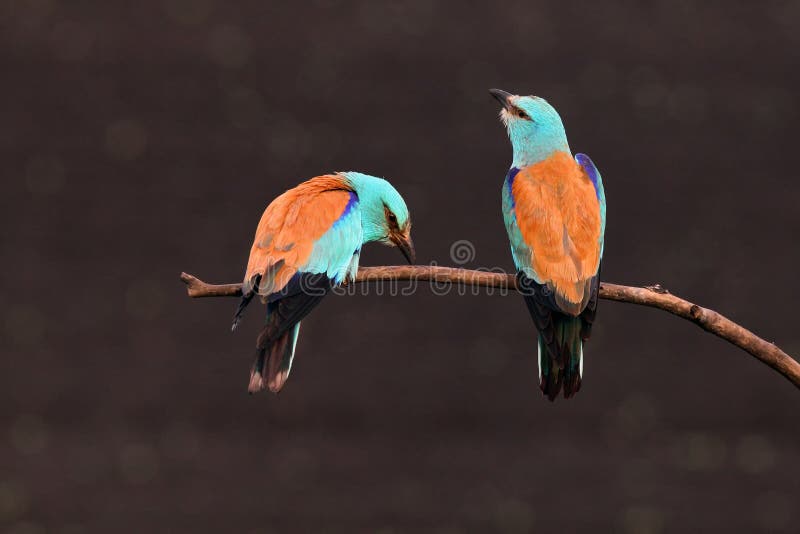==================
A Caveat and Affiliates
First off, a little caveat: within my articles you will find affiliate links, meaning if you buy them, I get a small commission. Your cost is not affected. In addition, I am an Amazon Associate and I earn from qualifying purchases on Amazon.
And yes, if I say that I recommend a product here, it means I truly believe it is a good product. I refuse to recommend any product that I have not researched and believe to be a good value.
Even better, I provide you with a very clear picture of the product, it’s use, and the probable value.
Earning your trust is important to me. I run this website myself and the commissions and donations help support the site.
Sound reasonable and fair enough? Let’s continue to the article.
==================
Bird Feeders for the Winter Months
Feeding birds in the winter months is an enjoyable activity, mainly if your landscape is used to attract beautiful feathered species. As the winter comes, food becomes inadequate. So, the birds start looking for bird feeders to survive.
While it seems straightforward to feed birds in the winter months, there are some crucial factors to be aware of. Knowing about the beneficial food for birds’ health and their well-being can make all the difference. Moreover, feeding birds the food that you shouldn’t during winter severely affect their health.
That’s why we have put together this detailed post to make sure you choose the suitable bird feeders and the right food to encourage these tiny birds to come to your backyard during cold months.
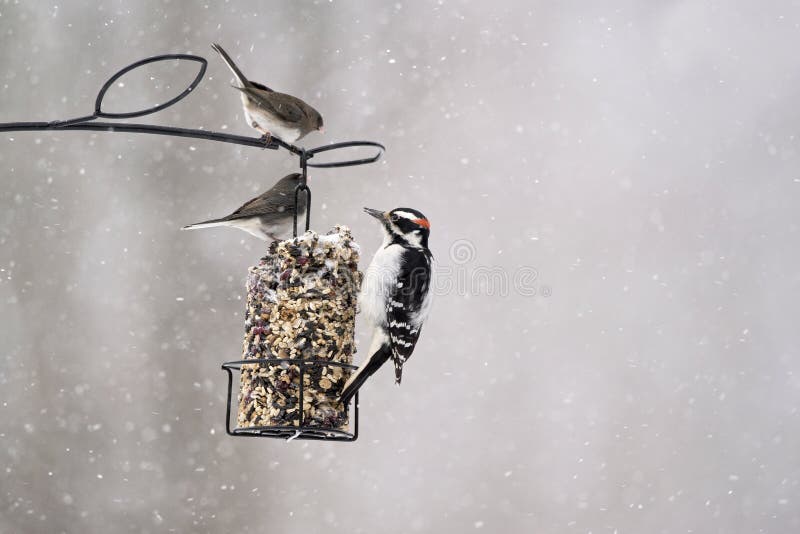
What Birds Seen at Winter Feeders?
It is a common misconception that only a few birds enjoy the cold temperatures. You can spot some unusual birds and a vast range of bird species eager to visit bird feeders in the winter months. There are so many bird species that are active during winters due to scarce food supplies.
From Snow Bunting to the Bohemian Waxwing and finches, you will witness majestic birds in winter. A few common birds seen at winter feeders include:
-
Bohemian Waxwing
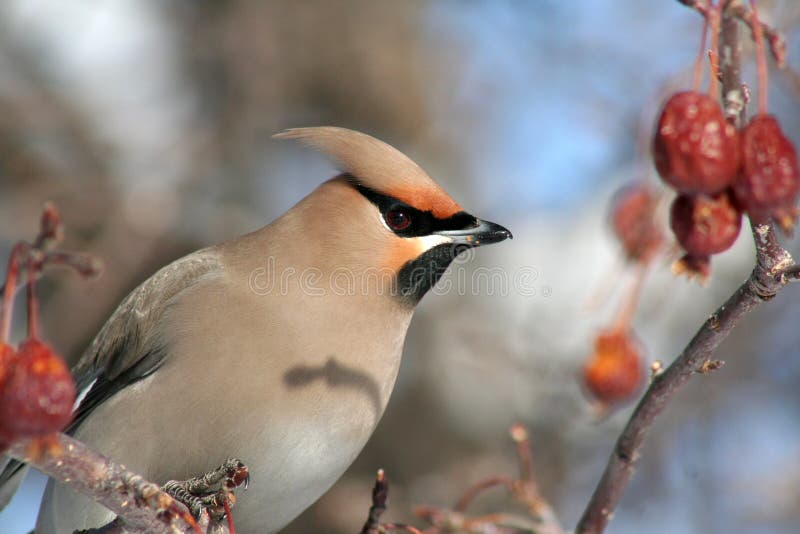
Bohemian Waxwing is a common bird in winters. You can usually spot the bird in the northwest and northern Rocky Mountain areas. Unlike their cousins, the Cedar Waxwings, bohemian waxwings are more extensive and feature rusty tail coverts.
These tiny birds love flocking to fruit trees and diving into the snow during colder temperatures. If you are a backyard birder and wish to attract a large number of bohemian waxwing, make sure to place a heating birdbath.
-
Northern Cardinals
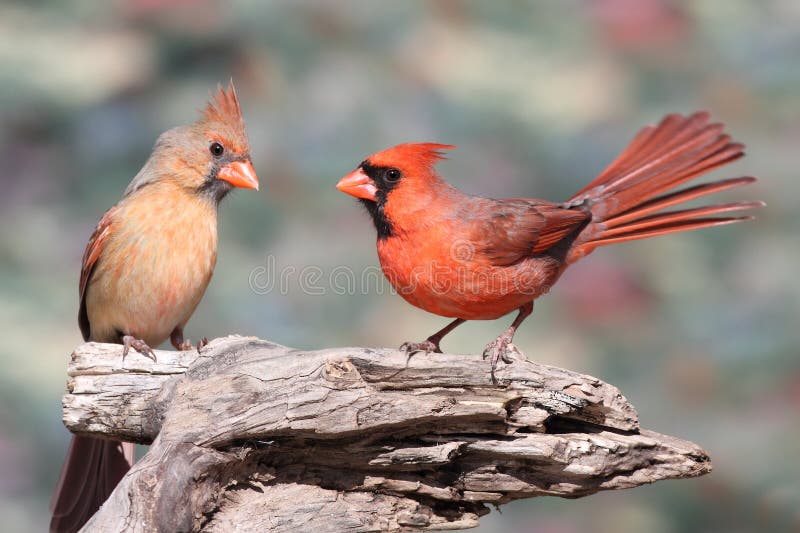
Northern Cardinals are another common winter backyard bird. While you can see these bold red birds throughout the eastern United States all year round, they’re particularly welcome during cold temperatures.
Their majestic plumage is a striking ornament to a flat landscape. While these cute birds love safflower seed and black oil sunflower seed, they are also partial to suet blocks with mixed fruit and seed. Offering them a heated birdbath during cold temperatures will attract these birds to your backyard.
-
American Robin
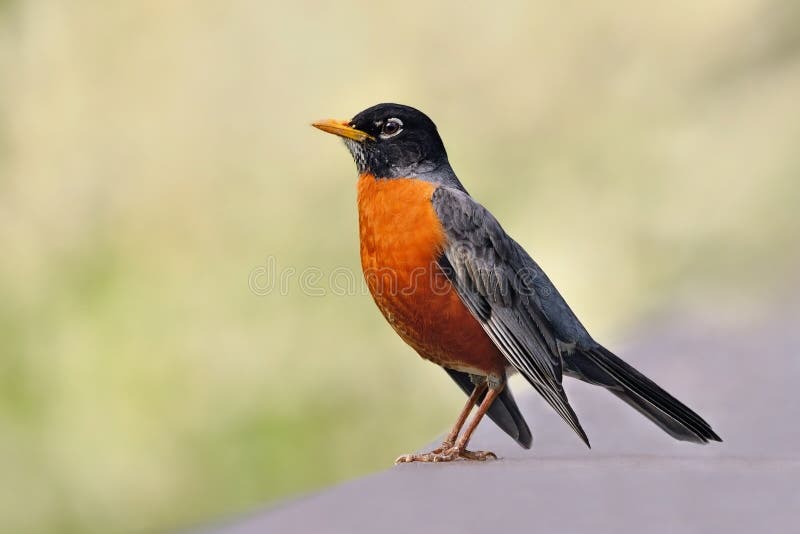
While the American robin is among the first spring birds for many birders, you can spot these birds easily all year round throughout the United States, unless the food is scarce and snow cover gets too deep. While American robins are migratory throughout Canada, they are also in parts of that summer range if the weather is suitable.
For backyard birders, the American robin loves birdbaths regardless of how cold it gets. You can also leave some fruits on the trees or offer them in feeders to attract more.
-
Tufted Titmouse
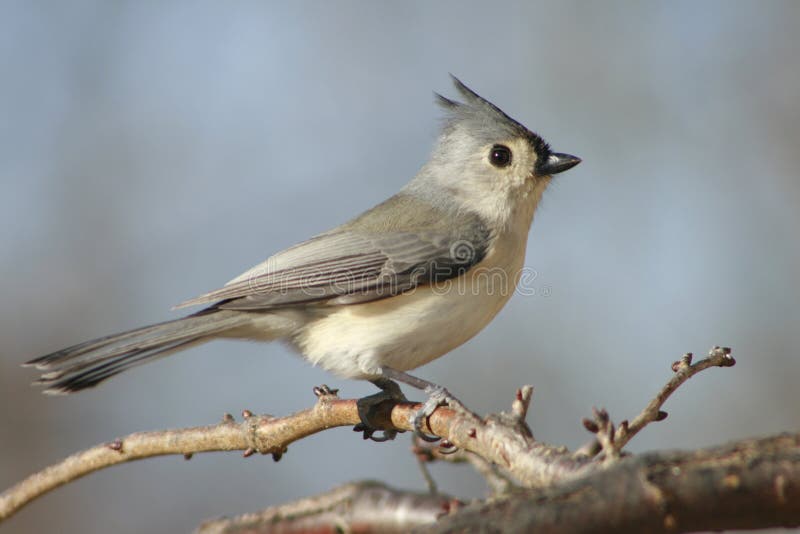
Tufted Titmouse is one of the most familiar titmice and is commonly seen in the Eastern US all year round. These birds visit feeders during colder months and prefer having peanuts, Suet, and seeds. These birds are bold enough, so you can also hand feed them.
-
Red-Breasted Nuthatch
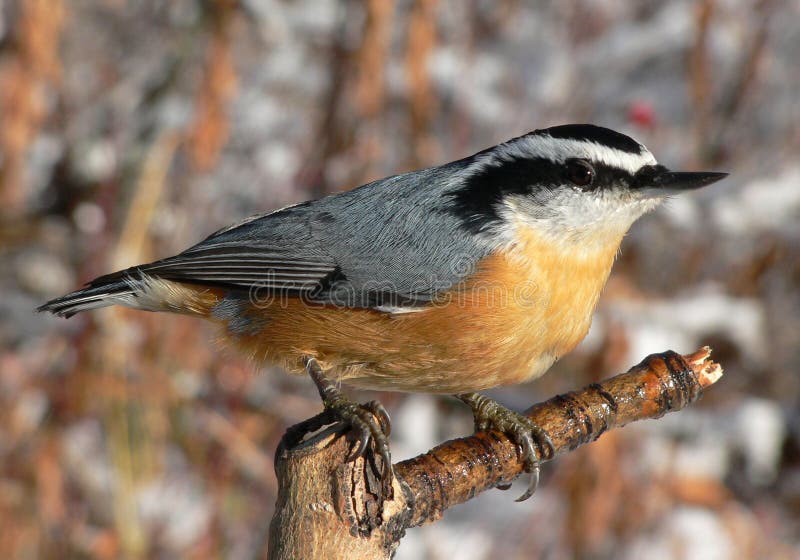
The red-Breasted nuthatch is another year-round resident throughout the upper Appalachian Mountains, western mountain region, and Canada. The bird can easily spot throughout the US during winter. This perky and active nuthatch is easily recognizable due to its red wash to its flanks and boldly striped head.
If you wish to attract red-breasted nuthatch to your backyard, make sure to offer them seed and suet blocks. As one of the very bold birds, you can also hand-feed them.
-
Dark-Eyed Junc

Sometimes called the “snowbird,” dark-eyed junco is a famous winter backyard bird. While there are various plumage variations of the dark-eyed junco, the Oregon dark-eyed junco is the most famous in the west. Similarly, plainer slate-colored junco is the most popular one in the eastern US.
Regardless of what dark-eyed junco visits your bird feeder in the winter months, white proso millet is what they love.
Similarly, a few other common birds seen at winter feeders include house sparrow, pine siskin, California quail, mountain chickadee, downy woodpecker, and snow bunting.
Chewy.com offers a full-line of wild bird supplies!
Bird Feeders for the Winter Months
Here are our top bird feeders for the winter months:
1. Bird Quest 17-Inch Spiral Bird Feeder
(see choices)Featuring an excellent spiral design, this bird feeder is a large one. Besides its beautiful design, it can host multiple birds to perch. The relatively large size of the feeder is also great for the winter months. You can use the feeder by baffling it above or with a dome. However, you have to purchase the baffle separately as it doesn’t come as standard. They offer color choices, too.
2. Woodlink NATUBE5 Audubon Tube Feeder
Here is another cool-looking bird feeder for the winter months. The brushed copper bird feeder is 13.5 inches long, making it easy to mount. The feeder also allows multiple birds to perch at once. It features four different feeding ports.
The best thing about the Woodlink feeder is that it is simple, affordable, and can attract a lot of finches. The feeder is particularly useful if your area has finches.
3. Squirrel Buster Plus Squirrel-Proof Bird Feeder
Unlike some other bird feeders for the winter months on the list, this one is a bit pricier because of its distinctive features. The bird feeder is particularly perfect for the winter months because of its easy-to-clean design and large capacity.
One fantastic feature is its patented design to keep pets away. You can also disassemble it for refilling and cleaning it.
4. Nibble Weatherproof Anti-Bacterial Bird Feeder
Besides being excellent for use all year round, this bird feeder is extremely easy to clean. It is manufactured to be simple to clean as you can disassemble it. Moreover, because of its antibacterial coating, the feeder is also great for resisting muckier conditions that snow can bring.
5. Perky-Pet Copper Panorama Bird Feeder
Perky-pet features a bit different design than the feeders on this list. As the name suggests, it is a panorama feeder, which means you can feeder your feathered friends from all around the bottom. You can get the feeder in either single or two-tier designs.
With the two-tier design, the space will get double for birds and storing the food. It also means you will have to refill it less than you do during the winter months.
The Best Bird Feeders Food for the Winter Months
Here are the top foods for bird feeders for the winter months:
1. Black-Oil Sunflower Seed
Black-oil sunflower seed is like a hamburger for our feathered friends. Regardless of bird species, they all like to taste black-oil sunflower seeds. Tiny birds that cannot crack these seeds will rub the surface under your bird feeder to pick bits and pieces.
Unlike a striped sunflower, the outer shell of black-oil sunflower seed is thinner, so birds can easily crack it. These seeds also contain more fat than the striped sunflower seed, making them a great winter food for birds.
While striped sunflower seeds are fine for big-billed birds, such as jays, cardinals, and evening grosbeaks, black oil sunflower seed is perfect at inviting a range of birds to your winter bird feeders.
2. Peanuts
Prepare your bird feeders for the winter months and fill them with dry, roasted, and unsalted peanuts. They are excellent fuel for birds because they provide protein and fat. A lot of feeder manufacturers produce tube-shaped bird feeders intended to serve peanuts.
A range of bird species, including jays, woodpeckers, chickadees, nuthatches, and titmice, will happily visit feeders, peanut-filled feeders. Moreover, they are also a great winter food for finches and cardinals. Whole peanuts are fine for woodpeckers, jays, and other big birds.
3. Suet
Suet for birds in winter is another high-energy food as it is an excellent source of fat. While commercial suet blocks are readily available at birdseed shops, you can also get raw Suet in the meat aisle from a grocery store.
It is fine to offer small chunks of raw Suet to certain birds; it doesn’t become sour quicker than commercial blocks. Moreover, if you don’t have a suet feeder, you can use an old mesh onion bag. Furthermore, for making long-lasting blocks, you can render raw Suet as well.
4. Safflower
Safflower is a thin-shelled, white, and conical-shaped seed eaten by a range of bird species. It is also one of the favorite bird foods in the winter months of the northern cardinal. Some backyard birders claim that blackbirds and squirrels don’t as readily eat the seed.
You can feed safflower in any bird feeder that can easily accommodate these seeds. However, avoid serving these seeds on the ground in rainy weather as they can become soggy and inedible.
5. Thistle Seed
Although an expensive bird food in the winter months, Thistle seed is consumed by a large number of bird species and all finches. However, you have to serve this tiny seed in a particular bird feeder. The two popular types of thistle serving bird feeders are small, thistle-sized tube feeders and thistle socks.
A thistle sock feeder is a synthetic bag filled with thistle seeds. Small finches can hang to it, pulling seeds out of mesh.
6. Cracked Corn
Cracked corn is another excellent food that you can serve through your bird feeder for the winter months. Birds, such as doves, quails, sparrows, blackbirds, and squirrels, are only a few species that eat cracked corn.
Depending on your location, you might also attract elk, deer, turkeys, caribou, moose, etc. Some backyard birders use cracked corns to keep squirrels away from feeders. Squirrels love corn, and whole corn is fine for them. However, for small birds, it is hard to digest because of big kernels.
7. Mealworms
Mealworm is another good bird food for the winter months. You can get live worms from bait stores or through mail orders. Bluebirds, in particular, can go crazy for mealworms and can eat a lot of these. Moreover, freeze mealworm bags are also available in wild bird feeding shops and big-box hardware stores.
8. Fruit
We as a human should eat at least three servings of fruit daily. It is also essential for birds though it is hard to find in various areas during midwinter. Serve banana or apple slices, grapes, citrus fruit, and melon rinds and see how these tiny birds will chow them down.
Serving fruit to orioles and tanagers is an effective spring and summer strategy, but many winter bird feeders can eat fruit too.
9. Homemade Bird Food for Winter Months
You can also fill your bird feeders for the winter months with homemade bird food. For instance, you can melt Suet in the microwave and then dispense it into an ice-cube tray. Once it hardens, you can add peanut bits, apple bits, or other bird foods.
How to Attract Goldfinches in Winter?
Goldfinches love bird feeders. Especially, placing tube or mesh feeders in your backyard will attract a large number of goldfinches to your landscape. Planting certain flowers is also an intelligent way to attract goldfinches in winter if you are a gardening enthusiast.
For instance, you can plant coneflowers, asters, thistles, and sunflowers to attract goldfinches in winter. Moreover, they also love weedy plants and grasses. You can attract goldfinches in the winter months by frequently replacing uneaten food every couple of weeks.
Feeding Finches in Winter
While finches can only eat tiny seeds, they also love to dine on sunflower and thistle. Feeding finches in winter also means the food you serve them shouldn’t be soggy or wet. These birds also occasionally love having the bark of young twigs.
Moreover, western red cedar, elm, and alder trees are great to lure and feed finches in winter. Although goldfinches add small insects to their diet in summer, the seed is still their top priority.
What Do Sparrows Eat in Winter?
So, what do sparrows eat in winter? Like a lot of overwintering birds, such as finches, titmice, jays, and chickadees, sparrows also love eating nuts, fruits, and seeds.
-
Nuts
It includes walnuts, peanuts, beechnuts, Brazil nuts, almonds, hickory nuts, and acorns. These nuts are a rich source of fats, protein, and essential vitamins.
-
Fruits
Usually, fruits like blueberries, raisins, grapes, cherries, and apples are readily available in various regions in winter. However, sparrows may not get fresh food during the coldest temperatures, so they look for leftovers on trees.
-
Seeds
Like any other winter bird, sparrows also love eating seeds in the winter months. It includes black oil sunflower, thistle, squash seeds, and safflower. These seeds provide higher fat content so the birds can cope with the coldest temperatures.
What Do Bluebirds Eat in Winter?
Feeding bluebirds in winter means they will rely on your feeders for survival. During the warmer months, bluebirds can find a lot of food to survive without any problem. However, when the weather becomes wet, harsh, and chilly, or when ice coats wild berries, bluebirds look for feeders to get some food.
While Suet, softened fruits, sunflower hearts are all great for feeding bluebirds in winter; they can eat mealworms all year round. Moreover, it is good to feed mealworms during the breeding period as the harried parents will gladly accept them to help nourish their ravenous young.
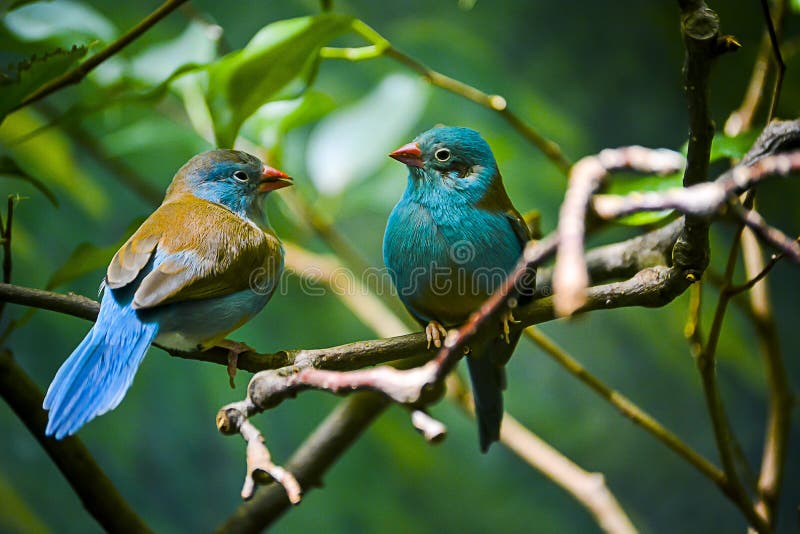
Bonus Tip: How to Attract Birds to A New Feeder
Here are tips on how to attract birds to a new feeder:
-
Place Your Feeder at Different Heights
Different bird species prefer to feed in different places, such as on the ground, trees, or shrubs. Placing your bird feeder at different heights mimics this and lures a lot of birds. If you don’t have a tree limb to hang your feeder, you can try a shepherd’s crook or pole-mounted feeder.
-
Place the Feeder Strategically
Birds will hesitate to visit your backyard if they feel like they are out in the open. So, another way to attract birds to a new feeder is to place it near shrubs or somewhere else where they can take shelter. Also, avoid the risk of collision by placing the feeder away from the windows.
-
Serve a Variety of Food
Serving a variety of seeds is another smart way to attract birds to a new feeder. While black oil sunflower is a favorite food for many birds, serving a combination, such as peanuts or thistle seeds, is different feeders that lure more birds.
-
Offer a Suet Feeder
Suet for birds in winter is another way to attract these cute little beauties. You can try placing plastic-coated suet cages. Moreover, mixing peanut butter and some caramel is also great to attract birds to a new bird feeder.
Conclusion
That is all about the bird feeders for the winter months. If you have any tips for feeding birds in the winter months, feel free to share your suggestions in the comments below.
Read More:
